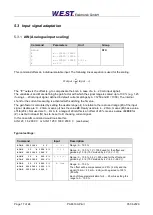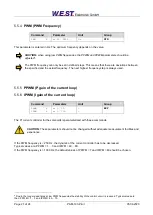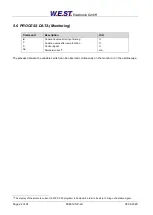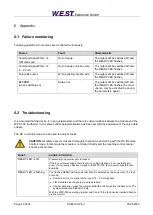
Page 8 of 24
PAM-190-P-A/I
3 Use and application
3.1 Installation instructions
All cables which lead outside must be screened; complete screening is required. It is also a require-
ment that no strong electro-magnetic interference sources are installed nearby when using our control
and regulation modules.
The equipment should be installed and wired in accordance with the documentation bearing in mind
EMC principles. If other consumers are operated with the same power supply, a star- connected
ground wiring scheme is recommended. The following points must be observed when wiring:
Analogue signal cables must be screened.
All other cables must be screened if there are powerful interference sources (frequency
converters, power contactors) and cable lengths > 3m. Inexpensive SMD ferrites can be
used with high-frequency radiation.
The screening should be connected to PE (PE terminal) as close to the equipment as pos-
sible. The local requirements for screening must be taken into account in all cases. The
screening should be connected to at both ends. Equipotential bonding must be provided
where there are differences between the connected electrical components.
With longer lengths of cable (>10 m) the diameters and screening measures should be
checked by specialists (e.g. for possible interference, noise sources and voltage drop).
Particular care is required with cables of over 40 m in length
– the manufacturer should be
consulted if necessary.
A low-resistance connection between PE and the mounting rail should be provided. Transient interfer-
ence is transmitted from the equipment directly to the mounting rail and from there to the local earth.
Power should be supplied by a regulated power supply unit (typically a PELV system complying with
IEC364-4-4, secure low voltage). The low internal resistance of regulated power supplies gives better
interference voltage dissipation, which improves the signal quality of high-resolution sensors in partic-
ular. Switched inductances (relays and valve coils connected to the same power supply) must always
be provided with appropriate overvoltage protection directly at the coil.























